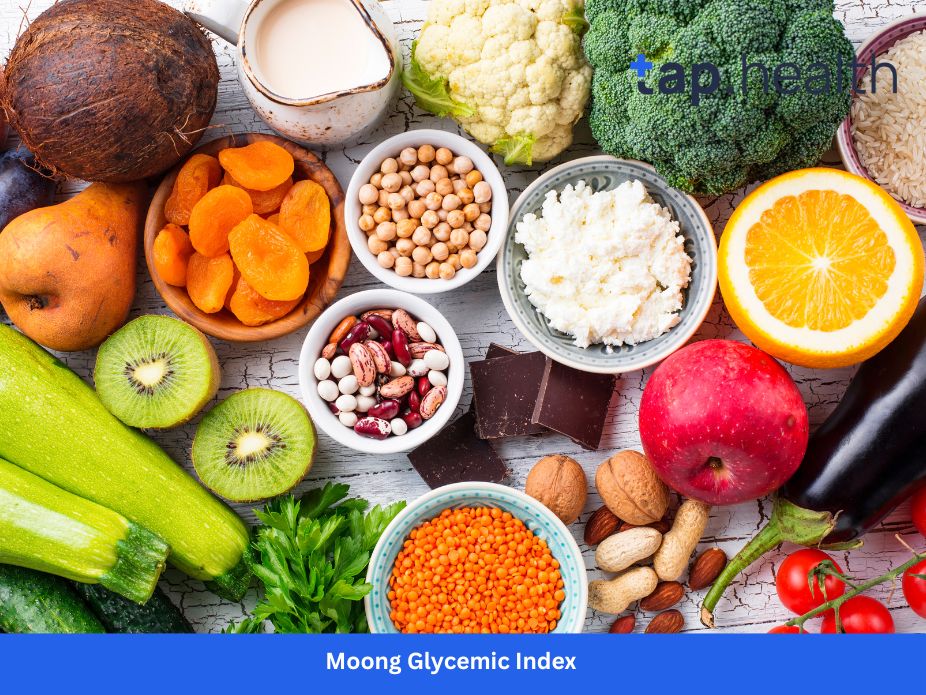Moong beans, also known as green gram, have been a staple in various cuisines across the globe, particularly in South Asia. Not only are they delicious and versatile, but they are also packed with numerous health benefits. One of the most significant reasons to include moong beans in your diet is their glycemic index (GI) – a critical factor for managing blood sugar levels.
In this comprehensive guide, we’ll discuss the glycemic index of moong beans, their effect on blood sugar, and explore all the amazing health benefits they offer. Whether you’re diabetic or just looking for a healthy addition to your diet, moong beans may be the right choice for you.
What is Glycemic Index (GI)?
Before we explore the GI of moong beans, it’s essential to understand the concept of glycemic index.
The glycemic index (GI) is a scale that measures how quickly carbohydrate-containing foods increase blood sugar levels. It ranks foods from 0 to 100 based on how they affect blood sugar. Foods with a high GI cause a rapid increase in blood sugar, while foods with a low GI cause a slow and steady rise.
Here’s a brief breakdown:
- Low GI (55 or below): These foods are digested and absorbed slowly, causing gradual increases in blood sugar.
- Medium GI (56-69): These foods have a moderate effect on blood sugar levels.
- High GI (70 and above): These foods are digested quickly, leading to fast spikes in blood sugar.
The GI of a food depends on factors like its carbohydrate composition, how it’s prepared, and whether it’s processed.
What is the Glycemic Index of Moong Beans?
The glycemic index of moong beans typically falls in the low GI range. This means that moong beans are slowly digested and their sugars are gradually released into the bloodstream.
- Glycemic Index of Moong Beans (Green Gram): 25 to 30.
This is exceptionally low compared to many other carbohydrate-rich foods. For comparison, foods like white bread have a GI of around 70, and potatoes can range from 80 to 100 depending on how they’re prepared.
Because moong beans release their glucose slowly into the bloodstream, they prevent sharp spikes in blood sugar, which is beneficial for people with diabetes and those trying to maintain steady energy levels.
Health Benefits of Moong Beans
Moong beans are not just about their low glycemic index; they also come with a host of nutritional benefits that make them an excellent addition to any diet. Let’s explore some of the key advantages of including moong beans in your meals.
1. Promotes Blood Sugar Control
One of the primary benefits of moong beans is their ability to help regulate blood sugar levels. The low glycemic index ensures that glucose is released gradually, preventing spikes and crashes in blood sugar. This makes them an excellent choice for diabetics or individuals at risk of developing diabetes. By stabilizing blood sugar, moong beans help reduce the need for insulin spikes, which can improve insulin sensitivity and overall blood sugar control.
2. Rich in Plant-Based Protein
Moong beans are a fantastic source of plant-based protein, with approximately 24 grams of protein per 100 grams. This makes them an ideal choice for vegetarians and vegans. Protein plays a vital role in maintaining muscle mass, promoting tissue repair, and supporting immune function. Additionally, protein slows the absorption of carbohydrates, helping to stabilize blood sugar levels further.
How Protein Helps in Blood Sugar Regulation:
- Protein consumption reduces the insulin spikes typically seen after eating carbohydrates.
- It can improve insulin sensitivity and help your body better utilize glucose.
3. High in Fiber
Moong beans are high in dietary fiber, which helps in slowing down digestion and the absorption of sugars. This fiber content is not only beneficial for blood sugar regulation but also supports digestive health. Fiber promotes gut health, aids in bowel regularity, and helps prevent constipation. The fiber also contributes to a feeling of fullness, making moong beans an excellent food choice for weight management.
4. Supports Heart Health
Moong beans are heart-healthy due to their high content of antioxidants, magnesium, and potassium. These nutrients contribute to reducing cholesterol levels, decreasing blood pressure, and improving overall cardiovascular function. Additionally, the low glycemic index helps protect the heart by preventing the harmful effects of blood sugar spikes that can contribute to cardiovascular disease.
5. Aids in Weight Management
Due to the combination of protein, fiber, and the low glycemic index, moong beans make a great food for weight loss. The fiber in moong beans keeps you feeling fuller for longer, reducing the likelihood of overeating. Since moong beans are also relatively low in calories, they can be included in a calorie-controlled diet.
6. Rich in Vitamins and Minerals
Moong beans are a great source of essential vitamins and minerals, including folate, iron, magnesium, potassium, and vitamin B6. These nutrients support a variety of body functions, from energy production to muscle function to nerve health. The presence of these micronutrients further enhances the overall health benefits of moong beans.
How Moong Glycemic Index Affects Blood Sugar
Moong beans’ low glycemic index plays a critical role in blood sugar regulation. When you consume foods with a low GI like moong beans, your body experiences a slower rise in blood sugar. This means that you can maintain energy levels for longer without the need for constant refueling, as opposed to foods with a high GI that cause rapid fluctuations in blood sugar.
This slow digestion and gradual absorption make moong beans a safe and beneficial food for diabetics. By consuming moong beans in meals, diabetics can better control their insulin levels and reduce the risk of complications from unstable blood sugar levels.
Nutritional Breakdown of Moong Beans
Moong beans are not just low in glycemic index but also packed with essential nutrients. Here’s a detailed look at the nutritional profile per 100 grams of raw moong beans:
- Calories: 347 kcal
- Protein: 24.5 grams
- Carbohydrates: 62.6 grams
- Fiber: 16.3 grams
- Fat: 1.2 grams
- Folate: 480 mcg (important for cellular function)
- Iron: 3.9 mg (supports blood circulation)
- Magnesium: 189 mg (supports nerve and muscle function)
- Potassium: 1,200 mg (helps maintain blood pressure)
These nutrients make moong beans a nutrient-dense food, offering multiple benefits for overall health.
How to Include Moong Beans in Your Diet
Now that you understand the health benefits and glycemic index of moong beans, let’s look at how to incorporate them into your daily diet.
1. Moong Dal (Lentil Soup)
A simple and nutritious way to include moong beans is by preparing moong dal, a lentil soup. This dish can be made with minimal ingredients such as turmeric, cumin, and coriander. It’s easy to digest and can be enjoyed by people of all ages.
2. Sprouted Moong Beans
Sprouted moong beans are even more nutritious than their unsprouted counterparts. To sprout moong beans, soak them overnight and then allow them to sprout by leaving them in a warm place for 1-2 days. Once sprouted, you can add them to salads, wraps, and sandwiches for an added crunch.
3. Moong Bean Salad
A fresh moong bean salad is an excellent way to enjoy their full nutritional value. Combine sprouted moong beans with chopped vegetables like cucumbers, tomatoes, and onions. Add a squeeze of lemon juice and a sprinkle of chat masala for extra flavor.
4. Moong Bean Flour (Moong Dal Atta)
Moong bean flour is a versatile ingredient that can be used in various dishes. Prepare moong cheela (pancakes) or flatbreads for a protein-packed meal. Moong flour is naturally gluten-free, making it an excellent choice for those with gluten sensitivity.
5. Moong Bean Stews and Curries
Moong beans can be added to stews or curries, paired with vegetables like spinach, tomatoes, and carrots. These hearty meals are both nutritious and delicious.
FAQs About Moong Glycemic Index
1. Is the glycemic index of moong beans affected by how they are cooked?
Yes, cooking methods can influence the glycemic index. Boiling moong beans maintains their low GI. However, overcooking or deep frying can increase the GI, making them more likely to spike blood sugar.
2. How do moong beans compare to other legumes like lentils or chickpeas in terms of GI?
Moong beans generally have a lower GI compared to many other legumes. For instance, lentils have a GI of around 21 to 29, while chickpeas range from 28 to 36, depending on preparation. Moong beans are one of the best options for slow, steady blood sugar release.
3. Can eating too many moong beans cause digestive problems?
Moong beans are generally easy to digest, but eating too many at once may cause some bloating or gas due to their fiber content. It’s best to gradually increase your intake to allow your digestive system to adjust.
4. Can moong beans be consumed by people with other health conditions?
Yes, moong beans are safe for most people. They are a great addition to weight loss diets, help with heart health, and can provide benefits for gut health. However, if you have any specific health concerns, consult your doctor before making significant dietary changes.
5. How many moong beans should I eat per day?
A healthy serving of moong beans is around ½ to 1 cup (roughly 50 to 100 grams) per day. This can be incorporated into meals like salads, soups, or stews.
Conclusion
Moong beans are a powerhouse of nutrition, providing a low glycemic index, essential proteins, fiber, vitamins, and minerals that can benefit your overall health. Whether you are trying to manage your blood sugar, lose weight, or simply eat more healthily, moong beans are an excellent food choice.
With their ability to regulate blood sugar, promote heart health, and support weight management, adding moong beans to your daily diet can have significant positive impacts.



